Volkswagen Golf 6 2008-2013 - used, experience, problems
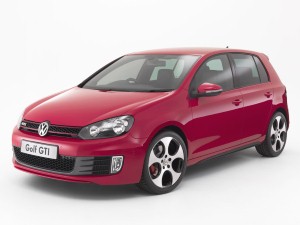
Volkswagen Golf 6
Golf has changed a lot since its debut in 1974 and has grown into a family car. In October 2008, Volkswagen has introduced the sixth generation of this successful car. Someone will Vw To call Golf VI Golf "five and a half," the six is based on the platform of its predecessor.
It is not easy to repair something that is almost perfect already, but it looks like Volkswagen has succeeded with the Volkswagen Golf 6. The Vw Golf VI is more sophisticated, comfortable and offers higher quality than the previous model. It turns out that Volkswagen is setting a new standard for the hatchback.
It wasn't really a brand new but completely restored version Volkswagen Golf 6 with small but key improvements. With the Volkswagen Golf 6, improvements are noticeable in driving, where the Golf VI is incredibly quiet and quiet, with the feel of a much larger car. With the sixth generation, Vw tried to take the best of the fifth generation and return to production quality standards at the time of the 4th generation.
The Volkswagen Golf VI was launched in 2008, replacing the least successful fifth-generation model. Initially, the Volkswagen Golf 6 was due for release in 2010, but work and production and sales were accelerated by the poor performance of the Golf V. Although generally the styling line remained the predecessor, this car has a modern, more sharp and angular shape that is a new trend in Volkswagen car design. Technologically based on the Golf V, including the same chassis, Volkswagen Golf 6 takes over from it. Under the hood, there are gasoline and diesel engines. The Volkswagen Golf 6se offers a 3- and 5-door hatchback, a 5-door station wagon and again a 2-door convertible. It can optionally have all-wheel drive. The premium version of the Golf R, with 270hp engine power, is the 210hp Golf GTI.
The length of the new Vw Golf VI is 4199 mm, 5 mm less than the previous model. On the other hand, the Vw Golf 6 is wider than 20 mm at the same height.
Volkswagen's first thing about the next generation of the show is the new features and big improvements. All engines in the new Golf 6 compliant with Euro V, fuel consumption is less than similar fifth-generation Golf engines. The engines are barely audible and do their job with incredible ease. The Golf VI is basically a significant upgrade Golf 5.
COMFORT - Volkswagen Golf 6
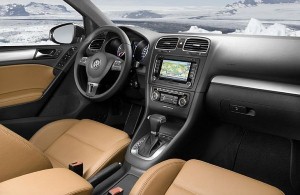
Volkswagen Golf 6
The interior is, of course, brand new, and what makes the Golf VI truly brilliant is its build quality, and in every respect, it makes a better impression and looks more expensive than its predecessor, although it is less expensive to manufacture. The instrument panel is positioned slightly higher, giving the driver and passengers a better subjective impression of safety. Another novelty in the interior is the white instrument panel illumination and the "parting" blue illumination introduced in the fourth-generation Golf.
Another proof that the Volkswagen Golf 6 was built on the same platform as the Golf 5 is the interior dimensions, which are one millimeter identical to that of the Golf 5. It was just an interior change. New and better materials were used, the appearance of the instrument panel and center ridge was improved, and the steering wheel was given a new look.
The Volkswagen Golf 6 is now even more reminiscent of some models from the Audi range, and many interior elements are inspired by solutions from the more expensive Passat. The controls of the trip computer and cruise control on the leather multifunction steering wheel give the impression that it is a car of a higher class. A similar conclusion can be drawn by observing and using the audio system, as well as all other systems in the car. Golf is also characterized by outstanding ergonomics. The driver can be adjusted exactly as he wants, and in the basic equipment package, the seats provide very solid lateral support, while the driver also has a height adjustment. In general, the Golf 6 offers the same amount of space and visibility as the generation five, which means - quite enough.
The Volkswagen Golf 6 cab is well insulated from outside noise. Generally, the Golf 6 is incredibly quiet and sophisticated while the suspension does a great job of absorbing bumps and holes in the road, making it ideal for long journeys. The seats are comfortable, there is a decent amount of passenger legroom in the rear seats, plus all the cars come with air conditioning as standard.
The Volkswagen Golf 6 is about 5 mm shorter than its predecessor, 4199 mm long, 20 mm wide 1779 mm wide, the height remains the same as its predecessor, 1479 mm. The front wheels are shortened by 12 mm and extended at the rear by 7 mm, which should contribute to better weight distribution and thus improved handling.
The Volkswagen Golf 6's boot is identical to the previous model with 350 liters (for the version with 4Motion has a smaller volume of 75 liters), but the folding rear seats, which can swivel in 1/3 or 2/3 ratio, gives space of 1305 liters. This is not as big as a Honda Civic or Ford Focus, but it is more than adequate for everyday use and happily swallows a pair of medium sized suitcases. In the case of the caravan, the boot is 505 liters, which grows after folding the rear seats to 1495 liters. The three and five door compacts are the same as in the previous generation with the same exterior dimensions.
The Volkswagen Golf VI will offer a high level of passive safety. The skeleton has undergone improvements and the standard will be seven airbags (front, side front, window and knee driver) for an extra charge for the side airbags for the rear row of seats and all models come with ESP stability controls as standard.
On the EURO NCAP test, the Volkswagen Golf 6 received 5 stars for passenger protection, 4 stars for child protection, 3 stars for pedestrian protection.
ENGINE - Volkswagen Golf 6

Volkswagen Golf 6
The Volkswagen Golf 6 range consists of six four-gasoline and two common-rail diesel engines.
The Volkswagen Golf 6 is based on the well-known base and the proven Golf 5 in terms of engine and technology. Its diesel engines have switched to common rail injection, and gasoline engines have never been a problem on the Golf 5 and the Golf 6 takes the baton safely.
Whether with a TDI diesel or a petrol TSI, consumption is always under control. TDI is an even smaller consumer by switching from pump-nozzle to Common Rail injectors. TSI with their two-stage turbo and direct injection and achieves very good results. All engines for the new Golf meet Euro V emissions and most of them will have some form of prefilling.
With the Volkswagen Golf 6, the gasoline engine is a 1.4 gasoline engine with 59 kW / 80 hp, nothing sets it apart, it's annoying, so if anything, it's better to think of a 1.6 with 75 kW / 102 hp. There is a modern 1.4 TSI that develops high torque and has a reasonable fuel economy. The weakest 1.4 TSI of 90 KW / 122 hp will satisfy most people, including the most powerful, with a 118 KW / 160 hp turbine and compressor. For the rebels, there is a 2,0 GTI with 210 hp and a 1.8 TSI with 160 hp.
All diesel engines in the Vw Golf 6 have common-rail technology, there is a 1.6 TDI engine with 66 kW / 90 hp and 77 kW / 105 hp. A big novelty will also be the 1.2hp 75 TDI three-cylinder, which will consume only 3,9 liters. Diesel 2.0 capacity in 3 power variants: 110 bhp is the smartest choice in this car, 140 bhp is reasonable, 170 bhp GTD as a diesel alternative to the GTI.
In addition to the five- and six-speed manual gearboxes, there will also be a range of gearboxes available sequential DSG automatic transmission with six and seven speeds.
1.2 TSI petrol
Atmospheric engines have been replaced over time by turbocharged TSI engines. The base is a four cylinder 1.2 TSI with 63 kW at 4800 rpm and a maximum torque of 160 Nm available from 1500 to 3500 rpm, there is also a 1.2 TSI with 77 KW at 5000 rpm and 175 Nm from 1550 to 4100 rpm. The engine block is made of aluminum alloy, which contributes to the very low weight of the aggregate - which weighs only 89,5 pounds. 1.2 TSI with direct fuel injection, eight chain-operated OHC valves and air conduction is provided by the turbocharger. In terms of design, both engines are identical, differ performance is due to the use of another ECU engine. Both engines give good flexibility at low and medium speeds. Both versions have minimal turbo lag and a good response to depressing the accelerator pedal. The stronger version comes with a six-speed manual transmission or a seven-speed DSG gearbox, the weaker version had to cope with a fifth-speed transmission.
1.4 gasoline
The base engine with a displacement of 1,390 cm3 develops 59 KW / 80 hp at 5000 rpm. It is a proven and relatively simple engine with multi-point fuel injection. The maximum torque of the base petrol is 132 Nm at 3800 rpm. Top speed is 172 km / h, acceleration to 100 km / h takes 13.9 seconds in combination with, the only one available with this engine, a 5-speed manual transmission. With 1.4 1390 cc 55 KW petrol at 5000 rpm and 126 Nm of torque at 3800 rpm, it was later increased to 59 KW and 132 Nm at the same speed. The unit is widely used in smaller models Vw Polo, Seta Ibiza and Škoda Fabia, but also quite heavy Octavia. The engine is suitable for vehicles used for city driving. The engine is characterized by good reliability.
1.4 TSI with 90 kW / 122 hp
The 1.4 TSI, as well as the more powerful 160 hp, is a 16 valve four cylinder. It is an EA111 generation of 1,390 cc engine. The engine features electronically controlled direct fuel injection, a turbocharger and an intercooler. Thanks to this engine, Volkswagen Golf 3 can reach 6 km / h in 100 seconds, combined with manual or DSG gearbox. Top speed is a solid 200 km / h. The maximum power of 122 hp is achieved at 5000 rpm, while the maximum torque of 200 Nm is available in the range from low 1500 to 4000 rpm. Even at 1250 rpm, which is almost equal to engine standstill, as much as 80 percent of the maximum torque is available. With a six-speed manual, the Volkswagen Golf 6 1.4 TDI consumes 6,2 l / 100 km, seven speeds DSG gearbox then 6,0 liters / 100 km.
1.4 TSI 118 kW / 160 hp
This 1.4 TSI is adorned with compressor and turbocharger assistance. Maximum engine power is 118 KW / 160 hp at 5800 rpm. Of particular note is the specific engine power: 1.4 lit. the engine provides 84.3 kW or 114.3 hp per liter of volume. Max. 240 Nm of torque is available from as low as 1500 rpm. With the most powerful petrol within the initial offer, the Golf VI arrives after only 8 seconds at 100 km / h, while the maximum speed is 220 km / h. Unlike the weaker TSI, this unit is equipped with a turbocharger and compressor. The compressor, mechanically driven by a belt, increases the torque of the TSI unit at low speeds. At higher engine speeds, the turbocharger with wastegate control jumps into action and works in pair with the compressor. At an engine speed of 3500 rpm, the compressor leaves all the work to the turbocharger.
This TSI has improved oil circulation and a more efficient oil pump, reducing camshaft and crankshaft wear.
1.6 75 kW / 102 hp
The 1,595 cc engine produces 3 kW / 75 bhp at 102 rpm. The maximum torque of these 5600 cylinders is 4 Nm at 148 rpm. Top speed is 3800 km / h, while acceleration to 188 km / h takes 100 seconds. Consumption of 11.3 atmospheric engine is 1.6 lit / 7.1 km.
The engine comes standard with a 5-speed manual transmission or 7-speed DSG.
The “Flex Fuel” version of the engine allows the use of ethanol as a propellant.
It is a reliable engine and with good service costs.
2.0 TSI
For sharper riders, there is the sport version of the GTI, the Golf GTI Edition 35 and the Golf R all with a two-liter turbocharged 2.0 TSI direct-injection drive. For the Golf GTI, the engine achieves 155 kW at 5300 rpm and 280 Nm of torque between 1700 - 5200 rpm. Golf GTI Edition 35 with 173 KW at 5500 rpm and 300 Nm between 2200 - 5500 rpm and Golf R version 199 KW at 6000 rpm and 350 Nm of torque between 2500 - 5000 rpm.
The engines are characterized by excellent dynamics between 2000 - 5000 rpm. The engine also has a quick response to the accelerator pedal.
At first glance, it seems to work in all versions with the same 2.0 TSI engine. The Volkswagen Golf GTi engine uses a different kind over the other two versions. The 155 KW Golf GTI uses the EA888 series engine and the other two use the old EA113 engine type, which is an evolution of the 2.0 TFSI Golf 5 and Octavia RS 147 KW. The EA888 engine is used to drive the chain, the fuel system is pressurized to 150 bar instead of 115 bar. The aim of the designer was to reduce the fuel consumption of the EA888 by an average of about 10%, and allow the use of 95 octane fuel. For the EA113 series the recommendation is 98 octane and above.
The Volkswagen Golf 6 diesel range has a choice of 1.6 TDI and 2.0 TDI engines. These units are equipped with modern common rail power, a floating flywheel and a particle filter, the last two elements raising the cost of repairs. In terms of work culture, performance and consumption are among the leading in its class, but unfortunately, they have not impressed in terms of maintenance costs.
For a weaker engine, a standard five-speed manual transmission will be standard, for a stronger six-speed engine. Optionally, both will have a six-speed DSG gearboxes.
Common-rail technology - fuel is injected into pressurized cylinders via 1800 bar piezo-electric injectors and eight-hole nozzles to provide better fuel dispersion. Piezo - electric injectors allow precise and faster opening of injectors than previous injectors with solenoid valves.
1.6 TDI
The Volkswagen Golf 6 diesel engine range starts with the 1.6 TDI in versions with 90 hp (66 KW and 230 Nm) and 105 hp (77 KW and 250 Nm). In October 2009, a more advanced model with BlueMotion technology was introduced.
The 1.6 TDI engine is refined and consumes 5,5 to 6 liters. Compared to the older and equally efficient previous-generation 1.9 TDIs, the Golf 1.6 TDI has drivers complaining about consumption, which is manifested mainly at higher speeds and also lower power at lower speeds. At a lower version of 66 KW, the difference in dynamics is even more pronounced. The lower engine dynamics are caused by lower compression compared to the 1.9 TDI. Because of agile driving or acceleration, it is necessary to choose a more powerful 1.6 TDI, the engine has a relatively wide rev range, but is also slightly more fuel efficient.
The 1.6 TDI BlueMotion has a maximum output of 77 KW and a maximum torque of 250 Nm at 2000 rpm. The combined fuel consumption is 3,8 l / 100 km.
2.0 TDI
Both engines have a volume of 1,968 cc, and feature the latest generation of common rail systems. They are characterized by the direct injection of fuel into the cylinders by means of a piezo injector, which operate at a pressure of 3 bar. Electronically controlled piezo crystals, hydraulically assisted, inject fuel in a split second. Compared to conventional solenoid valves, piezo technology enables a flexible fuel injection process with less and better measured fuel. The advantage is very quiet and smooth operation of the engine, excellent response to driver commands, low fuel consumption and emissions.
2.0 TDI - Common-rail systems have less problems than in the past An abundance of dynamics at moderate consumption of about 6 liters gives the 2.0 TDI with common-rail, which is available in three power levels of 81 KW (250 Nm), 103 KW (320 Nm) ) and 125 KW (350 Nm).
Robust growth at lower speeds and a relatively wide rev range. Significantly improved reliability.
2.0 TDI 81 kW / 110 hp
Thanks to the excellent torque of 250 Nm available from 1500 rpm, the Volkswagen Golf 6 accelerates to 100 km / h in 10,7 seconds and reaches a top speed of 194 km / h. The maximum power of 110 hp is reached at 4200 rpm.
2.0 TDI 103 KW / 140 hp
The 140hp version is impressive. Consumption of 4,9 liters is also 0,6 liters lower than before. 320 Nm of torque is available from 1750 rpm and can accelerate to 100 km / h in just 9,3 seconds at a top speed of 209 km / h.
Thanks to common-rail injection, the Volkswagen Golf 6 no longer produces vibrations, as with the Golf 5. It also has other benefits, such as a small turbo hole. Up to 4500 rpm 2.0 TDI unit is full of power.
2.0 TDI 170 HP
The best diesel is a 2.0 TDI with 170 hp available exclusively in the GTD model. Like other diesels, this is a common rail engine, so quiet and sophisticated. It also delivers its power incredibly smoothly and there is no delay at low revs, like the older TDI engines from Volkswagen.
The sixth-generation Golf comes standard with a five- or six-speed manual transmission, characterized by short gear changes and precise operation, or a six-speed and seven-speed DSG gearboxes.
The DSG6 and DSG7 (depending on the engine) dual clutch gearboxes are more than comfortable to use. Fast and smooth speed change, no increase in consumption compared to manual transmissions.
DSG gearbox it can act as an automatic but allows the driver to change gears manually. DSG in fact it consists of two gearboxes. When one gear is in use, another already selects the next gear, so it's faster and more efficient than a traditional automatic transmission. Especially the new seven-speed DSG is recommended: it makes Golf noticeably faster and more economical.
DSG gearbox it can operate in two modes - fully automatic or manual speed selection. The mode selection is made by moving the selector lever to the desired position, ie. left (automatic mode) or right (manual mode).
The Golf VI performs even better than the "five", though the design of the two-car suspension is the same. So classic McPherson up front and multi-link in the back. The car behaves safely at high speeds, does not swing and holds its direction well. It also has precise control with electro - hydraulic servos.
The list of newspapers that the new Golf will entertain us with is quite long. There are a number of technical innovations, such as the DCC system with three modes of operation (normal, sport, comfort), ACC automatic distance control system, rear cameras integrated in the VW logo, Park Assist system.
Volkswagen Golf 6 - Model History
2008 Volkswagen Golf 6 petrol engine 1.4i 16V (59 KW), 1,6 and (75 KW), 1.4 TSI (90 KW and 118 KW) introduced. 2.0 TDI (81 kW and 103 kW).
2009. Introduced 1,6i LPG engine with 75 KW, introduced GTI - 2.0 TSW, 1.2 TSI (77 KW), turbo diesel 1.6 TDI (66 KW and 77 KW).
2011. Offered version 1.2 TSI with 63 KW special edition Vw Golf GTI Edition 35 with 173 KW.
2012. Introduced Golf 7.
2013. End of production of Volkswagen Golf 6.
FAULTS - Volkswagen Golf 6
Vw Golf can have relatively good reliability, problems arise especially in models from the first years of production. Of course, the reliability of the vehicle also depends on the quality of service and use. Despite good workmanship, there is occasional noise from internal plastics. Sometimes there are problems with the climate, which is most often the fault of the coolant that leaks on the cooler in the system. Sometimes there is a problem with the door opening disorder - stuck jams, electronic lifts or delayed reactions to folding mirrors. Problems can also be caused by defrosting the rear window, powering the tailgate to open, and heating the mirror.
All engines. ECU engine reprogramming can solve bad start problems, lack of power, unstable idle.
To replace the oil is a choice or fixed service interval of 30000 km (two years). Or a variable Longlife service interval, as indicated by the indicator on the instrument panel. But experience has shown that especially for diesel engines, such a long service interval leads to excessive wear of some components and subsequent complications. It is therefore recommended to shorten the oil change interval every 15 km and not later than 000 km.
The Volkswagen Golf 6 has many components with the Golf 5 as well as other Volkswagen cars.
Atmospheric gasoline engines feature solid reliability, sometimes there may be problems with the lambda probe and the coil.
Vw Golf VI 1.2 TSI 105 hp, entry-level models, have problems with high oil consumption.
Vw Golf VI 1.2 TSI Rattle Rod Bipass Valve - Similar to the rattle of the timing chain.
1.2 TSI Defective Electronic Control Control Turbo Charger Pressure - Significant Decline in Engine Dynamics Models Manufactured Between 2009 - 2012
1.4 16V gasoline engines may have problems with motor electronics and the gasket of the cylinder head.
The Vw Golf VI 1.4 16V petrol engine has problems with the camshaft sensor, the problem is manifested by heavy starting of the warm engine.
TSI engines - soot production occurs, especially with the 1.4 TSI, which goes to 3.6 liters of engine oil, to the 2.0 TSI goes to 4,2 liters. With sharper driving, the oil overheats, leading to increased soot production. It is therefore recommended that the oil change is made after a maximum of 15000 km or a year.
At the beginning of production of Volkswagen Golf 6 with 1.2 TSI and 1.4 TSI engines owners had a number of problems. There was a rattle sound during operation, the problem was solved with a new engine ECU program and turbine change or modification. In a limited number of engines, camshaft extensions and chain tensioners occur, causing the engine to run loud and cause engine failure.
In the case of the 1.4 TSI engine, there are problems with the injectors and the water pump. There is rarely a problem with a faulty fuel pressure regulator or high pressure pump.
1.4 TSI engine oil pumps can fail at 75000 km causing severe engine damage.
70000 km Volkswagen Golf 6 1.4 TSI 122 requires a new drive chain, indicating that the LongLife oil service mode is inadequate.
1.4 TSI problem with the divorce chain, on cars traveling short distances there may be an elongation of the chain.
1.4 TSI - knock sensors improperly calibrated for certain fuels, which Libra says should be at least 95 Ron.
The problem with the stronger 1.4 TSI (118 KW) is with the pistons. There are instances of melting - damaged or cracked pistons and links, especially if the vehicle is often driven at a sharper pace. The first symptom is a gradual loss of compression and increased oil consumption.
Vw Golf VI 1.4 TSI with 90 KW and 118 KW variants, have trouble starting because of injector problems.
2.0 TFSI engines suffer from a problem with the bobbin, the problem occurs because of oil leakage per bobbin.
210 hp TFSI engines are oil sensitive and need to be changed at least every 10000 km or there may be a problem with the drive chain.
Due to a poorly engineered chain tensioner, the propulsion of the early Golf GTI EA113 engines can slip, causing the piston valve to hit and the engine to self-destruct. Later GTIs, since about 2011, have modified chain tensioners.
Complaints from America and Canada on a frozen TDI engine intercooler. It can lead to poor engine performance, throttling and engine failure, difficult starting and even hydraulic stroke of the engine when a large amount of water or foam mixture is water - the oil is drawn into the TDi engines. Starting after a 'shock' can cause a fire when the starter wires overheat.
Flowmeter failure - Reason for neglecting to replace air filters regularly.
Among the more common failures of the 1,6 TDI and 2.0 TDI are: faulty EGR valve controller (weaker traction, jerk or switch to safe driving mode along with engine failure light). Excessive flywheel wear can occur over many miles; also to injector problems, which means noisier and malfunctioning of the engine or difficult starting of the engine. DPF filter problems are usually found only at higher mileage and if sometimes occur earlier, mainly as a consequence of frequent short-haul trips, where filter regeneration does not occur and the filter gradually becomes clogged.
TDI engines white smoke soon after starting a cold engine can be a sign of turbine wear.
Faulty EGR Valve Cooler - Loss of coolant of the TDI engine, especially in winter and when driving a short distance.
TDI diesel engines have problems with the cylinder head gasket and fuel pump, causing coolant or diesel fuel to leak into the crankcase. An increase in the engine oil level that it needs to intervene to prevent major damage.
Few TDI engines had problems with the high-pressure fuel pump.
Common problems with EGR valves on 1.2 TDI and 1.6 TDI diesel engines. The cars are driven short distances and with low revs, so the soot settles.
EGR valve problems for 1.6 TDi 105 hp. These engines are for the long haul, not for the short haul.
Problems with the DPF filter on 1.6 TDI diesel engines that are driven short distances.
Volkswagen Golf 6 1.6 TDI diesel engines have a number of complaints about the increase in coolant consumption. It is assumed that replacing the cylinder head gasket would eliminate the problem.
On 2.0 TDI Common Rail engines, leaks can occur on high pressure pipes during the service life of the vehicle. The solution is anti-vibration balance weights placed on high pressure pipes.
The auxiliary belt falls on the 2.0 TDI engine at 70000 km, wraps around the gear belt and causes severe damage to the engine. The auxiliary belt tensioner was later modified.
1.6 TDI there is a problem with injectors. The problem is solved by reprogramming or changing it.
In the case of vehicles equipped DSG gearbox, the need is to properly check the transmission and check the flow of gear changes. The gear change must be free of noise or large shocks in both modes (automatic or manual) and at full load. Also, check the notifications on the dashboard for different error messages.
For vehicles with DSG gearbox pay attention to regular maintenance and a smooth change in transmission rates. If the transmission is noisy and clumsy and difficult at startup, a reprogramming of the control unit should be done, if that does not help it is necessary to change the control unit.
Gearbox DSG6: Gearbox sensor temperature calibration problem. The affected models have production dates between September 2008 and July 2009, requiring reprogramming of the ECU gearbox.
7-speed warranty DSG gearbox. Problem with Mechatronics unit, Mechatronics unit replaced. The transmission makes strange noises heard in the car when shifting from 4 to 3, 3 to 2, and 2 to 1, outside the car, the noise is a metallic sound and it repeats.
Code DSG gearbox oil change should be maintained after 60000 km. Problems with mechatronics or excessive clutch wear are usually found only in gearboxes with higher mileage, generally over 200000 km, or with a sharp driving style, especially in relation to more powerful engines.
Volkswagen Golf 6 vehicles equipped with DSG7 gearbox and manufactured before September 2011. In these vehicles, the sulfur in the synthetic oil on the control unit can cause corrosion, especially in conditions with high temperatures and humidity. Corrosion on the transmission control unit causes a short circuit and explosion of the transmission fuse. Due to the power failure in the transmission, the openings clutch and cause a sudden and complete loss of power on the wheels. Although other on-board systems such as steering and braking will continue to function, loss of power can pose a risk to passengers and other road users. If necessary, the service will drain synthetic oil and fill with mineral oil - no charge.
'Adaptive Chassis Control' on the 1.8 TSI models can significantly lower the throttle response when driving on a side road or when entering a roundabout. By software reprogramming, it is best to drive in Sport mode.
Some owners face difficulties with the electric steering gear.
The alarm can be triggered for no reason - software updates are the solution.
Poor GTI-mounted headlamp series by 2012, main beam range very poor.
Common problems with controls for raising and lowering electronic lifts.
Radio and signal m issues on fuel quantity display. A problem solved by reprogramming a computer.
Intermittent electrical problems - central locking, electronic windows, alarm, rear window heaters, rearview mirror heating ...
Test the stereo system of both radios and CDs, and be sure to blow cold air conditioning shortly after turning it on. Poor climate performance can be the result of a dirty or clogged condenser or coolant leak, hose leakage is another possible culprit for poor climate performance.
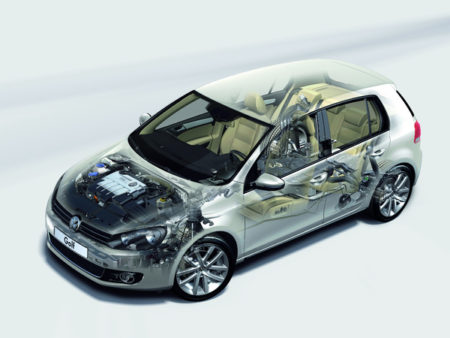
Volkswagen Golf 6
On the first models, Bluetooth only works with a few mostly outdated Nokia and Siemens phones. Hands-free works perfectly with all the lists it shows, such as phone book and missed, received and dialed calls.
Numerous complaints about water retention in the door when parked at an angle. Rainwater drain holes in the door can sometimes be blocked with anti-corrosion protection. It is necessary to remove the hole from the hole to allow the water to escape.
Optics - several cases of condensation in optical headlamps.
Sometimes noise from plastic in the cabin, higher intensity in winter.
Revocation in September 2010, of all models from the beginning of production until February 2010, to place an air duct on the floor, which can be separated from the heating box.
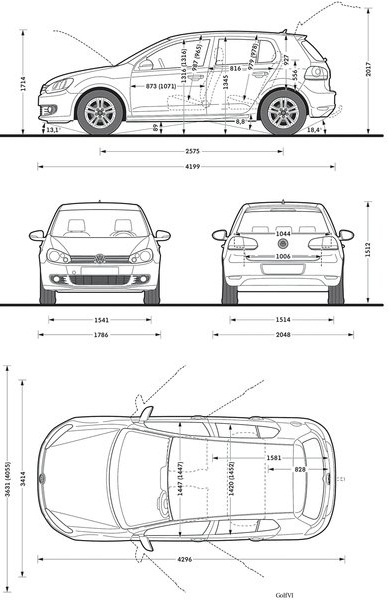
Volkswagen Golf 6
CONCLUSION
Volkswagen Golf is an extremely popular car in the half-car market due to its strong reliability and durability, you can be sure that you get a well-made and proven car, even if it has traveled many kilometers.
The Golf VI offers a very good mix of comfort and grip. The chassis absorbs most road bumps and penetrates into the cabin with only a minimum of shock. In addition to driving comfort, internal insulation is to be commended.
In any case, the Volkswagen Golf 6 offers European driving manners, space for five passengers, agility, great maneuverability, easy parking and vehicle dimensions to facilitate loading and unloading of equipment.
Golf 6 used price - used car inspection
Recommendation of similar texts:

Hi there, I am Mladen and I am an auto enthusiast. I started this blog years ago to help like minded people share information about latest cars, car servicing ideas, used car info, exotic cars, and auto technology. You will find helpful articles and videos on a wide variety of cars - Audi, Mercedes, Toyota, Porsche, Volvo, BMW and much more. Ping us if you have anything cool to share on latest cars or on how to make older cars more efficient, or just want to say hi!


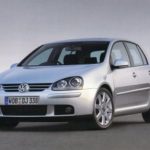




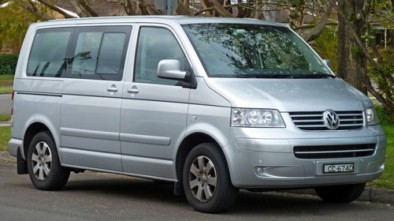
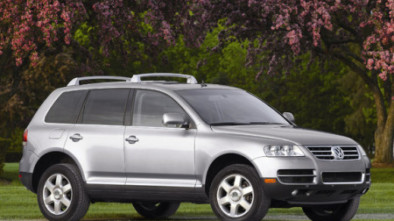
Good luck on a very helpful article 😉
Vw Golf 6 - specification, frequent problems and malfunctions
https://www.youtube.com/watch?v=EhSu6OjtyAc
All the best for the Golf 6 new generation 1.6 TDI 105hp, 77kw
the best car I've ever had, a perfect, flawless ideal bar for me